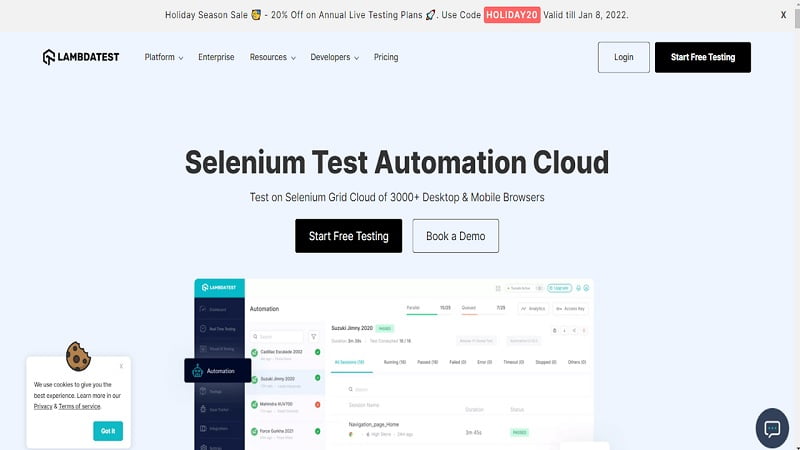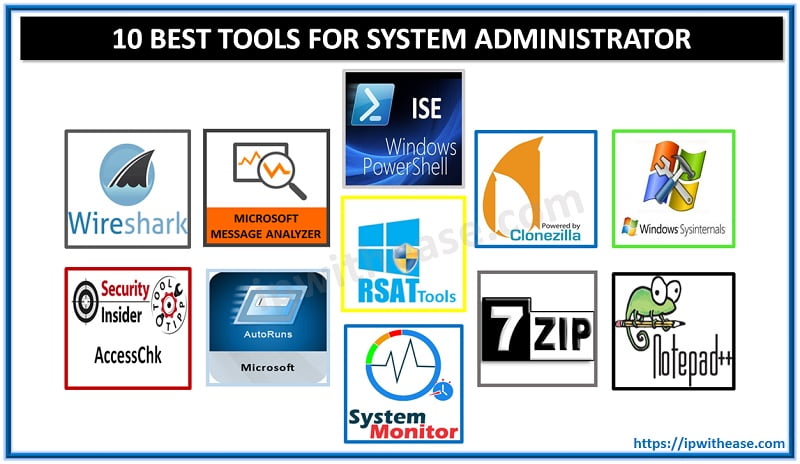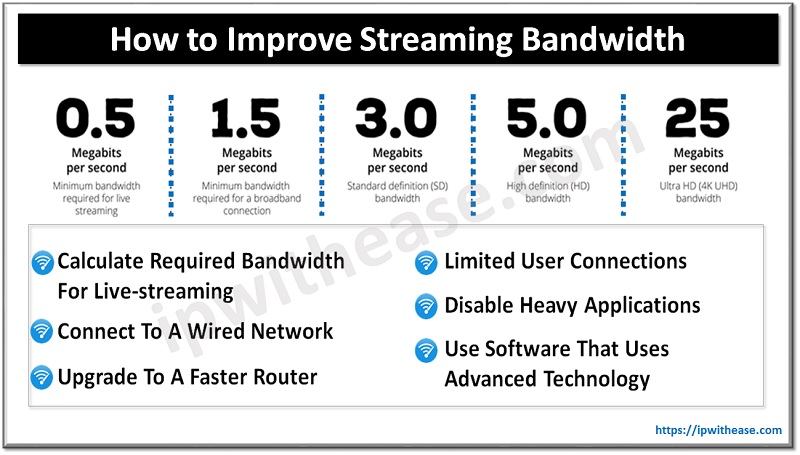An automation framework is a collection of processes and tools, that work together to perform the complete automated testing of your application. This whole test automation framework integrates different functions like many reusable modules, libraries, and test data. The framework is more like an implementation guideline. This includes your coding standards, repository treatment, test data handling, etc.
Why Automation Framework Is Needed In Software Testing?
A framework is a complete guideline for technically implementing automation testing. Automation framework is a blessing in the context of using the code in different situations (different platforms and versions like iOS, windows, etc.) and it also helps in building the standard format of the testing script. Therefore, building an automation framework solves all the issues and increases portability.
Benefits of Automation Framework Testing:
- Code can be tested continuously.
- Test code maintenance becomes easy.
- A definite strategy around the test suites.
- Applications can be tested rightly.
- Speed of the testing process increases.
If you have to execute the same test script many times with different builds to understand the application then the test automation framework comes out as the best choice. It even helps in validating the output in the best way.
Types of Test Automation Framework
These frameworks can be used in the most effective manner to deal with the code in the right and organized way. This helps the third person to review the work better and it gets easy for them. While choosing the framework consider all the things like requirements of your project, expertise of your team, and your budget. Ultimately this helps in increasing productivity and keeps everything standardized. Choose the right framework and it will maximize your test coverage.
Some of the well-known test automation frameworks are mentioned below:
1.Behaviour Driven Development Framework:
This framework allows to build a platform that is used by anyone be it a business analyst, developer or a tester, etc. All of them can actively be a part of it, which makes collaborations more efficient between testers and developers on the ongoing project. For creating test specifications natural language can be used. People having technical skills and experience are required to work for this framework.
2.Linear Automation Framework:
For testing small applications linear automation is one of the best approaches. It is also well known as the “Record and playback framework”. You will not require any expertise because you don’t have to write down the custom code. The only issue is that you cannot re-run the different sets for various test cases as you have to make the changes whenever the data is altered.
3.The Keyword- Driven Testing Framework:
This framework is well known as “table-driven testing”. You can apply this framework in small applications and projects. The test script is completely based on the keywords which are specified on the project’s excel sheet. The code is reusable as a single keyword can be used in many of the test scripts. To set up this framework you initially need a little higher cost and it is a little complex as well.
4.Modular Driven Framework:
In this framework as per the requirement of the client, the tester breaks down the complete application into small modules. This creates individual test scripts. The only issue with this framework is that it needs a lot of extra time for analysing the test cases. Also, it is a little difficult to find out the flows which are reusable.
5.Data-driven Testing Framework:
The external sources to read the test data are DAO objects, excel files, ODBC sources, text files, and CSV files. So the external files are loaded in the variable which is present inside the test script. Bypassing different sets of test data, a test automation script can be created with the data-driven framework. The count of scripts decreases in this framework which means you can test many scenarios within the lesser code.
6.Hybrid test Automation Framework:
This combines the data-driven framework and keyword-driven framework. It adds up to the advantages of both the related frameworks. In this automation framework, effort increases as it is a hybrid form of the testing framework.
Tips for building the first testing Framework
Having so many options of the framework, and choosing the best from them is a difficult task. So to know which framework will be the best one for your code and how you should proceed to build it, it is very important for you to follow all of the steps closely while proceeding with your framework.
Choosing the right testing framework and tool:
- Understand whether the testers need the codes or tests with the record and playback testing. If the tester is using coding then they need something flexible like Selenium as it will support different languages.
- Is your application an android app, a web app, or an iOS app? As for every platform, there are different frameworks so you need to choose the framework that will support you with the best in the platform and will execute the best. Not just this you need to be aware of the platform which your tester will use like Linux, Mac, or Windows. Choose a framework that runs the best one with your platform.
- Considering your budget is also an important factor in deciding the perfect automation tool. So keep this as an important factor as well.
All these factors are considered by one tool which is LambdaTest Selenium Automation cloud.
LambdaTest Automation Cloud
While starting building your first automation framework you will need a testing platform that will help you to accelerate your process. LambdaTest Selenium Automation testing Cloud will be of great help. Here are some features of the platform.

- You can run your Selenium Test Scripts on over 3000+ desktop and mobile devices.
- It provides parallel testing with the help of which developers and testers can perform test execution much faster and release the product sooner.
- As avowed by the company, “HyperExecute” is their fastest test execution platform where you will get results in minutes.
- The language will never be a problem as this tool integrates with almost every framework and language like C#, Java, Node, JavaScript, etc.
- Debugging using the Selenium Test Automation is very easy. You can also analyze your selenium test logs in detail.
Structure, Organize, & Set up source control:
Organize your test assets (tests, scripts, criteria for mapping names) in a folder. So within each one make folders which you think you may need. For example, you have a folder named script, then inside this script folder, you want to have folders for each type of script- verifications, event scripts, utilities and actions. You must create a file for your data as well.
By doing this you will be helping your team members as now the assets are structured so your team can easily refer it. If you have structured your assets in this way then you can always roll back to your data with utmost ease. So in the initial steps, you can use the source control management system (SCM) to store your work. Examples of SCM are mercurial, git, etc. Organising it in the above fashion will never let you lose your data as you can always backtrack.
Build and Manage Verifications:
Once you have structured your data it is important that it should be shareable. Think that you are testing an application and suddenly the requirement changes on the text field of that application. So your text field accepts only numeric type data but not text so in this case you need an update.
So in such cases you do not want to update each and every test, to avoid being stuck to update every single test, what you do is to update the verification part in one spot so that you do multiple tests, and still, it works for all. So to propagate the change at each and every place which is called chaining the item together and in this way you manage the verification at all the places by making the changes at once.
Familiarization with the Application:
You need to gain some hands-on experience to understand any application. Apart from reading the application document which describes the dos and don’ts of the application, you need to test the application yourself by performing certain actions that would help you understand the internal workflow set up and working of the application. Once this part is completed, the next step will include the creation of a system for your UI objects or an update to find the UI objects.
Data Gathering and setting up of the testing environment:
The next step includes identifying the data that will be required for testing, soliciting it from various areas, and then setting up the testing environment. It is important to set up the configurations in such a manner that they are compatible with various other testing environments as well. This is the time when the use and importance of event handlers will come into frame.
For example, consider certain applications give you an option to fill the correct password up to a maximum of 3 times. A notification giving you a warning comes up every time you input an incorrect password. After 3 maximum limits, your account gets locked for a certain amount of time. Your event handler in this case is the function that triggers the script on the number of times an incorrect password was used and the complete locking of the accounting process.
Setting up of a Smoke test project:
The next step before the creation of utilities and verifications is to set up a smoke test project. A smoke test project is a verification test that is built to verify the utilities that will be created and to validate the key functions of the application. It also determines if the application requires any additional testing or not. If the criteria of the smoke test project are not passed then it means that the functionality of the application is somewhere broken and requires more work before moving ahead with the next step. The capabilities of a smoke test project will also expand depending on the maturity of the software.
Creation of Utilities for On-Screen actions:
After all the earlier steps, it is now time to create the required utilities for the common user interface actions. These utilities will be the basic building blocks of your test. Multiple utilities together will help you form the entire test logic. As per the tool you are using this whole thing is comparatively easy as drag and drop into keyword test. This drives the verification and test flow which in turn results in minimal maintenance cost. Within the framework, you can use JavaScript for navigation.
Conclusion
Testing is one of the most important phases in the software development cycle and automation in it helps in making the product and provides the best precision. Having a test automation framework such as LambdaTest Selenium Test Automation is important as it helps in optimizing the resources and helps in facilitating different resources as per the need of the organization. It increases the volume of testing. With the help of a framework, you can have simultaneous testing of different devices. Chances of mistakes are comparatively less in the case of the automation framework so it is way more reliable and increases the speed.
Continue Reading:
Network Penetration Testing: What, Why, and How
DAST – Dynamic Application Security Testing
ABOUT THE AUTHOR
IPwithease is aimed at sharing knowledge across varied domains like Network, Security, Virtualization, Software, Wireless, etc.



